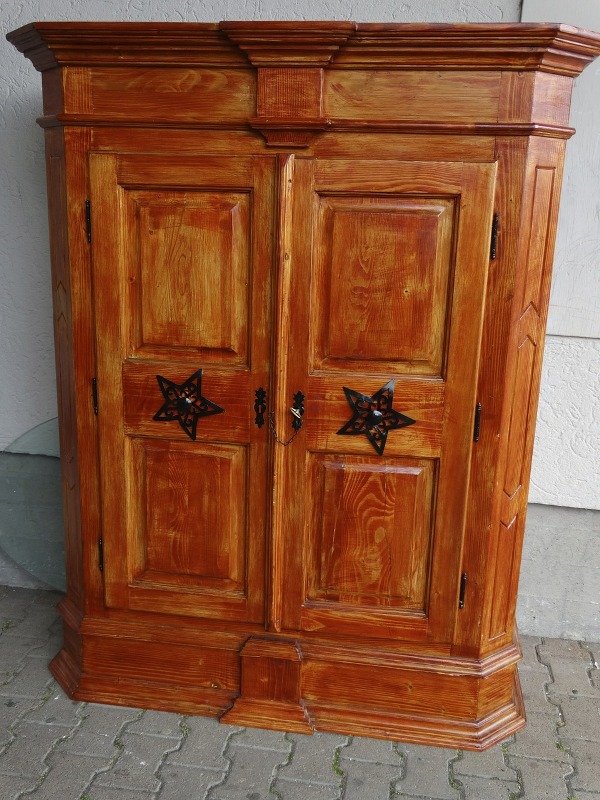Cupboards
Cupboards (sometimes indicated on drawings by the letters CPD) are recessed areas, or sometimes standalone pieces of furniture that are used for storage. The term is derived from the English words cup and board, and originally referred to an open-shelved sideboard or table that was used to display items such as plates and cups. Cupboards are now typically closed, with doors on the front and may be fitted with shelves. They may be recessed, fitted, or free standing.
The term ‘wardrobe’ (sometimes indicated on drawings by the letters WRD) refers to a cupboard that is used for the storage of clothing. It may also be used to refer to the clothes themselves. It is derived from the words ‘warder’ meaning to guard and ‘robes’ meant clothes. Very large wardrobes may be referred to as 'walk-in wardrobes'.
A pantry is a storage area for food, and sometimes dishes and other household items. It is derived from the French word ‘pain’ meaning bread. A larder is similar, but is generally cool to aid the storage of food and is typically adjacent to the kitchen.
An airing cupboard contains a water heater, providing hot water to a building, and slatted shelves on which linen and towels can be stored, preventing them from becoming, or remaining damp.
Other types of cupboard include fume cupboards, linen cupboards, under-stairs cupboards, kitchen cupboards, and so on.
[edit] Related articles in Designing Buildings
Featured articles and news
Homes England creates largest housing-led site in the North
Successful, 34 hectare land acquisition with the residential allocation now completed.
Scottish apprenticeship training proposals
General support although better accountability and transparency is sought.
The history of building regulations
A story of belated action in response to crisis.
Moisture, fire safety and emerging trends in living walls
How wet is your wall?
Current policy explained and newly published consultation by the UK and Welsh Governments.
British architecture 1919–39. Book review.
Conservation of listed prefabs in Moseley.
Energy industry calls for urgent reform.
Heritage staff wellbeing at work survey.
A five minute introduction.
50th Golden anniversary ECA Edmundson apprentice award
Showcasing the very best electrotechnical and engineering services for half a century.
Welsh government consults on HRBs and reg changes
Seeking feedback on a new regulatory regime and a broad range of issues.
CIOB Client Guide (2nd edition) March 2025
Free download covering statutory dutyholder roles under the Building Safety Act and much more.
Minister quizzed, as responsibility transfers to MHCLG and BSR publishes new building control guidance.
UK environmental regulations reform 2025
Amid wider new approaches to ensure regulators and regulation support growth.
BSRIA Statutory Compliance Inspection Checklist
BG80/2025 now significantly updated to include requirements related to important changes in legislation.


























